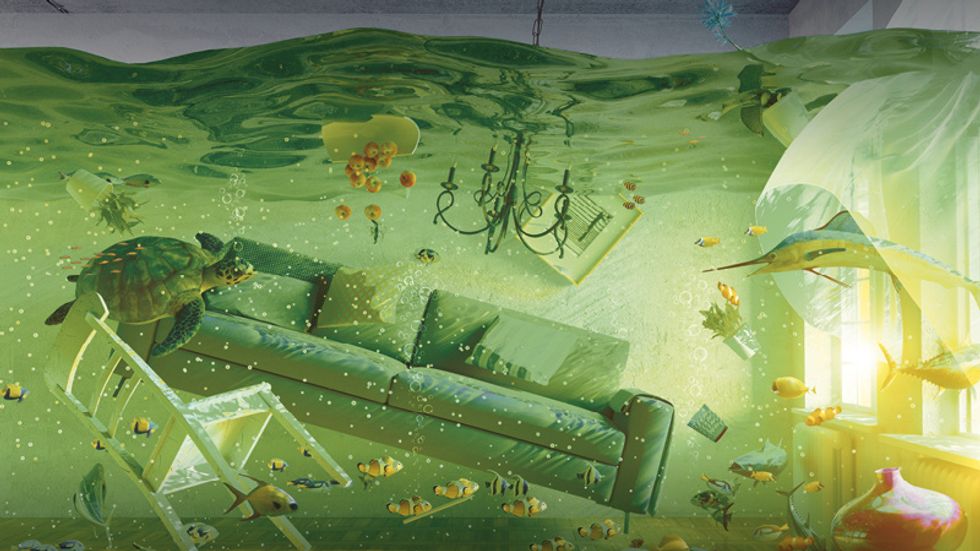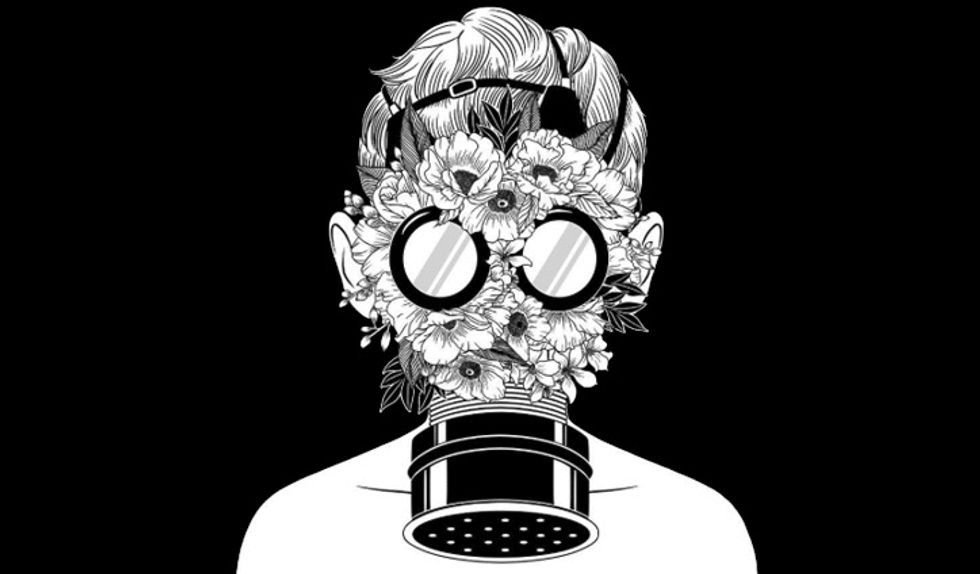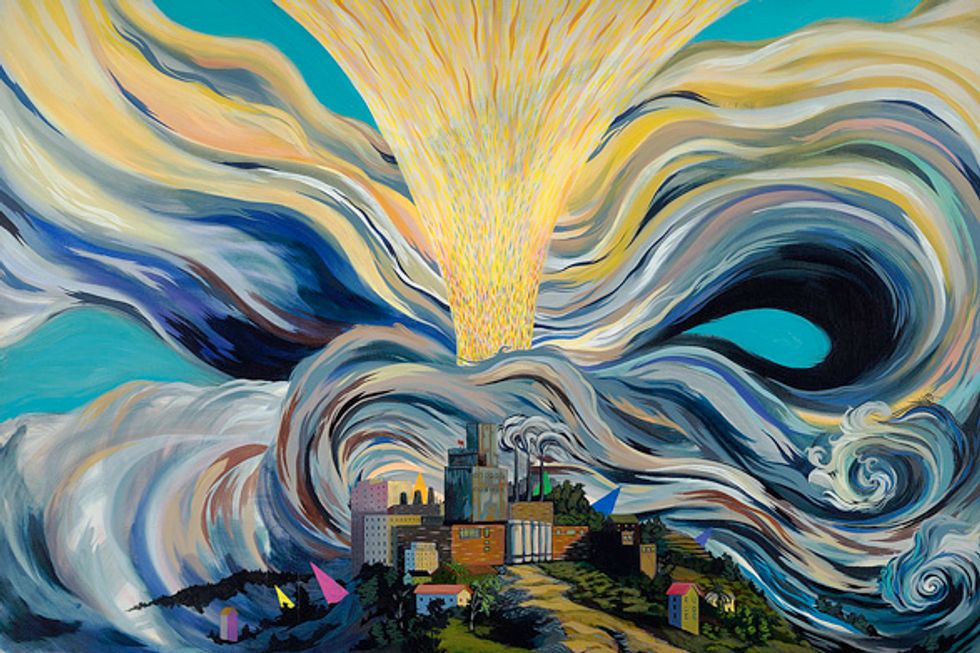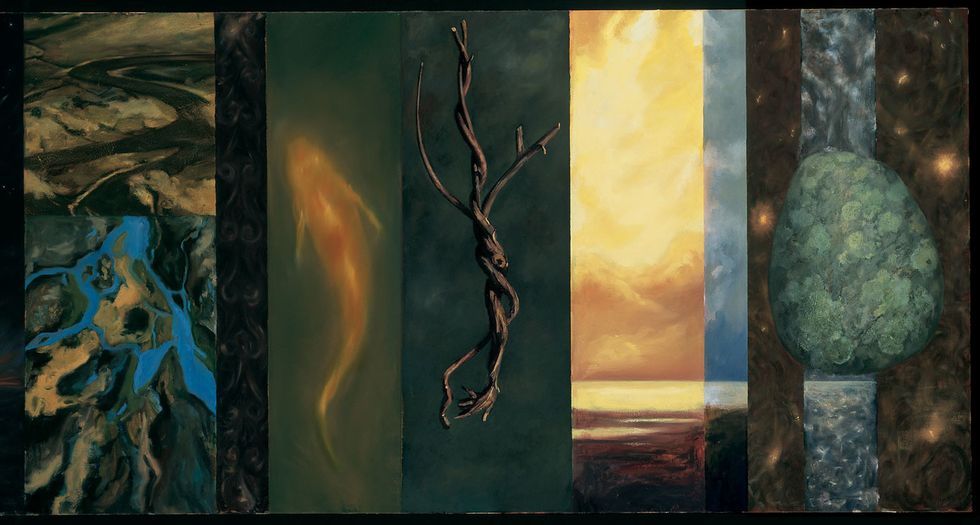If you’re reading this, you probably know that the earth is not doing well. A 2018 UN report declared that we have 12 years to keep the global climate from rising more than 1.5 degrees, or we’ll face catastrophic warming levels. Even knowing this, our worldwide carbon emissions have only continued to rise, with atmospheric CO2 reaching a record high at 417.4 ppm in May 2019.
In essence, we know the world is ending, we know why, and yet we have done nothing to stop it. In fact, things are getting worse.
 Image via blog.derby.ac.uk
Image via blog.derby.ac.uk
The Argument for Despair
Faced with this truth, it’s all too easy to slip into despair, and this is what’s happening to people all over the world. A recent VICE article explored the mental health crises that many people are experiencing because of climate change. Known as “climate despair,” sometimes called “eco-nihilism” or “human futilitarianism,” chronic feelings of hopelessness about climate change are becoming all too common among those who have allowed themselves to fully comprehend the extent of the crisis.
For people who suffer from these feelings, it doesn’t help that life appears to be continuing as normal, while only a few of us seem to care that the world is burning down. This creates a sense of duality that can be even more painful than consciously accepting the reality of climate change, as it involves a deep suppression of pain and fear, which is then left to fester in the psyche. Living this “double life,” according to Joanna Macy‘s essay “Working Through Environmental Despair,” can be detrimental. “Awesome and unprecedented in the history of humanity, the awareness lurks there, with an anguish beyond naming,” she writes.
This awareness can manifest in many ways; and often it has lead to depression or suicidal thoughts. Even therapists are having trouble knowing how to handle the looming specter of climate despair. Several people quoted in the VICE article described how their therapists attempted to trace their terror of climate change back to personal traumas, instead of acknowledging the validity of these fears.
 Image via Its Nice That
Image via Its Nice That
Children are just as vulnerable to these feelings as adults. As they watch governments refuse to act, kids are growing up in the world with little faith in the government or the adults around them, and with the knowledge that they’ve been born into a disaster they never asked for but have to deal with.
Greta Thunberg was one of these kids. She’s spoken extensively about the feelings of despair that nearly paralyzed her as she became more and more aware of the climate crisis. “Before I started school striking, I was … so depressed and I didn’t want to do anything,” she once said.
But when she began to speak, as many of us know, she became one of the most outspoken and well-known climate activists in the world. According to Thunberg, this was not a choice. “I feel like dying inside if I don’t protest,” she said. For those suffering from climate despair, that feeling of dying inside is a familiar one. But Greta’s inspiring actions contain seeds of hope, perhaps the best hope against climate despair.
The truth is that things are only hopeless if we don’t take action. Conveniently, taking action might also be one of the best things we can possibly do to work through climate despair.
 Image via Handelszeitung
Image via Handelszeitung
Our Best Shot at Hope
Although they might be realistic responses to the threat of climate change, feelings of despair—when they aren’t turned into action, or are suffered through in solitude— present a terminal danger to the climate movement, as they promote stagnation when what is truly needed is unity and protest.
This doesn’t mean that we should deny the gravity of the situation. Action begins with admitting the problem, not stuffing it away under layers of performative normalcy. “Until we find ways of acknowledging and integrating that level of anguished awareness,” continues Joanna Macy, “we repress it; and with that repression we are drained of the energy we need for action and clear thinking.”
Still, the answer is also not necessarily to let oneself fall down a hole of hopelessness. Often, the doomsday-esque reports that are inundating the Internet and certain academic circles can be the opposite of productive. Sometimes, these reports are inaccurate, overly dramatized and apocalyptic. These alarmist articles that proclaim that we are all doomed often have the opposite effect, shaking people into complicity when the truth is that though things are really bad, there is hope.
There is hope.
Though we won’t be able to reverse climate change, it is possible to salvage so much of the world and to prevent the worst consequences of ecological decline. Human beings have mobilized massively before—we’ve split atoms and spread cell phones across the globe in less than a decade—and we can do it again. We have the technology, the money, and the capability: All we need to avert immediate crisis is the will and the public support to elect people into office who will take action.
 Image via Flickr
Image via Flickr
We have the resources to fight climate change. Many countries are instituting programs to reduce their carbon emissions. Small nations like Denmark and Belgium have successfully slashed their carbon emissions, and plans like the Paris Agreement are promising attempts at global change. What we need to do is fight, to spread awareness, to elect people into office who will take action, and to make it clear that we as a human race won’t go down at the hands of an elite cult of carbon-worshipers determined to ruin all of our futures for the sake of their own fortunes.
Climate activism doesn’t solely have to be a fight against something, though: it can be a fight for a better world. Though climate change is often painted as an entirely doom-and-gloom issue, some of the things that fighting it will combat it could benefit our whole society, healing some of the deep wounds that have caused our modern epidemic of mental illness, addiction, and loneliness.
According to Naomi Klein, author of This Changes Everything: Capitalism vs. The Climate, this impasse at the brink between oblivion and climate disaster presents an unprecedented opportunity for positive change. This crisis can be a beginning, not an ending, she argues: the beginning of a movement towards a more interconnected and compassionate world.
“Climate change—if treated as a true planetary emergency akin to those rising flood waters—could become a galvanizing force for humanity, leaving us all not just safer from extreme weather, but with societies that are safer and fairer in all kinds of other ways as well,” she writes. “The resources required to rapidly move away from fossil fuels and prepare for the coming heavy weather could pull huge swaths of humanity out of poverty, providing services now sorely lacking, from clean water to electricity. This is a vision of the future that goes beyond just surviving or enduring climate change…It is a vision in which we collectively use the crisis to leap somewhere that seems, frankly, better than where we are right now.”
This kind of future would require a paradigm shift, a complete departure from our current free-market model that glorifies isolated successes and prizes maximum consumption above all else. It would require that, among other things, we sacrifice our own desires for the good of everyone else.
We need to sacrifice the concept that the goal of life is to be able to pursue one’s fortune to the highest level: And we have to acknowledge that we operate in an interconnected network, and must lift each other and our planet up, if we wish to continue to live on this earth.
The shift is already beginning. Organizations like Sunrise and Extinction Rebellion have emerged at the forefront of the fight against climate change; and artists are starting to wake up, too. But even if you don’t have a massive platform or aren’t going to protests, even just talking about the ecological crisis with others can ignite powerful chain reactions. Overall, probably the most meaningful thing you can do is work to elect officials who will make good on their promises to cut emissions and create a better world while doing it.
 Image via Ethics and International Affairs
Image via Ethics and International Affairs
Where We Go From Here
Still, considering the amount of mobilization and effort that these changes require—and considering how determined major, extremely wealthy fossil fuel companies are to squander these efforts—it’s extremely difficult to be hopeful all the time when it comes to the climate crisis. Plus we’ve already damaged some things beyond repair, and we’ve lost many people to the wildfires and hurricanes rooted in climate change; to name a few, the 79 people lost in California’s Camp Fire, and the nearly 3,000 people who lost their lives in Hurricane Maria.
And so, as the VICE article proposes, to comprehend the full extent of the climate crisis, first we need to let ourselves grieve. We need to allow ourselves to grieve as we would in the face of any other tragedy—to comprehend the harm that we’ve done to our planet and to recognize and honor our feelings about it.
Once we recognize these feelings, we can begin to deal with them. As Macy continues, “To experience pain as we register what is happening to our world is a measure of our evolution as open systems. This is true not only from the perspective of systems science but from that of religion as well. How many mystics in their spiritual journey have spoken of the ‘dark night of the soul’? Brave enough to let go of accustomed assurances, they let their old convictions and conformities dissolve into nothingness, and stood naked to the terror of the unknown. They let processes, which their minds could not encompass, work through them. It is in that darkness that birth takes place.”
While it’s important to embrace one’s despair and grief regarding climate, it’s equally important to view these feelings as starting points for a spiritual and political revolution, instead of hindrances that need to be suppressed. If we view climate as a consequence of evils we’ve always been peripherally cognizant of—like selfishness, greed, and the hypocrisy that plagues human society—then we can view the climate crisis as an opportunity to at the very least connect with other people who understand that we, collectively, cannot continue this way.
Through this lens, climate despair is far from an endpoint. Rather, it connects us to the world around us, and to other people who care enough to want to see a better future for everyone and everything. “As our pain for the world is rooted in our interconnectedness with all life, so surely is our power,” writes Macy.
So if you’re pained by climate change, good. That pain means you love something. That love means you’re alive.
 Image via Occidental Arts and Ecology Center
Image via Occidental Arts and Ecology Center
- Climate Change and the Death of Hope in 2020 – Liberty Project ›
- The Climate Crisis Is About Social Oppression – Liberty Project ›
- I Felt Despair About Climate Change—Until a Brush With Death … ›
- The case against despair on climate change ›
- Climate of despair: How the state of our environment is affecting my … ›
- Talking about climate change: walking the line between hope and … ›
- Overcoming Despair – 350.org ›
- In despair over climate change? Try ‘active hope’ ›
- Don’t despair: the climate fight is only over if you think it is | Rebecca … ›
- National Climate Assessment: How to deal with despair over climate … ›
- How I stave off despair as a climate scientist ›
- ‘Climate Despair’ Is Making People Give Up on Life – VICE ›





